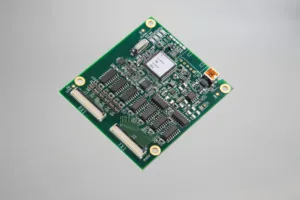Zytronic, a leader in advanced, rugged Projected Capacitive Technology (PCT™ and MPCT™) touch sensors is unveiling a new multi-touch controller with a faster response time and gesture recognition support for smaller self-service touchscreen applications.
Optimised for displays of 22” diagonal and less, the new Zytronic ZXY150 touch controller is designed to offer tablet-like multi-touch functionality on smaller screens for publicly used interfaces in kiosks, ATMs and vending machines. The ZXY150 provides native support for the latest multi-touch capable operating systems (OS), with on-board firmware featuring 10-point touch and palm rejection functionality. Used in combination with Zytronic’s patented, customisable ZYBRID® touch sensors, the controller will operate reliably through 10mm thick toughened glass, allowing unattended self-service kiosks to provide iPad levels of performance and responsiveness, in systems designed to perform reliably 24/7 on the streets.
The new ZXY150 completes the Zytronic Multi-Touch controller family, including the ZXY200 and ZXY300 which are optimised for use with sensors and displays of larger size. Zytronic can now provide multi-touch capability for its entire range of touch sensors, from 5 – 85 inches, in a near limitless range of designs.
The footprint of the new controller measures 76mm x 66mm. Connection and power are provided via a USB mini-B connector. The ZXY150 provides “plug-and-play” HID level support for the more recent Windows and Linux operating systems, with a simple, user-friendly software application (ZyConfig) downloadable from Zytronic’s website to aid integration and allow adjustment of the controller’s sensitivity settings if required.
Commenting, Ian Crosby, Sales and Marketing Director said, “The new touch control board extends full multi-touch functionality to the full range of touch sensors we offer. The ZXY150 offers fast, reliable touch recognition, gesture support and excellent palm rejection, allowing kiosk and instrument designers alike to give their users an iPad-like experience irrespective of the environment or application.”

